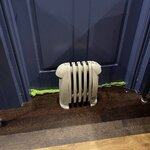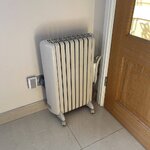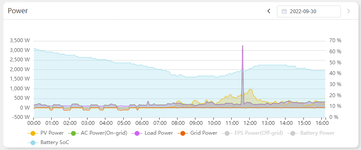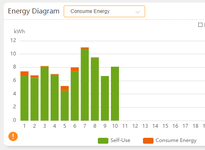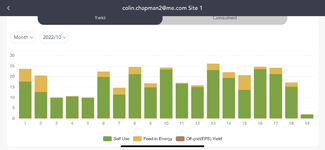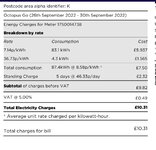I installed it today and it was dead easy - if your existing central heating controller is attached to an industry standard controller backplate, then it's just a matter of pulling off the old controller and pushing the new one back in. If you don't have a standard backplate, then one comes in the box and it'll be a matter of transferring over the wires. I disconnected the wiring for my old thermostat that is in the hall - so you have the choice to leave the old stat where it is doing nothing, or remove it if you want to.
The TRVs come with a couple of adapters - I understand there are 4 different types of TRV screw fitting, but the vast majority are one of two standard styles, and it's those styles that adapters are provided for. You just unscrew the old TRV head and screw the replacement in place - no plumbing needed.
The TRVs connect to the controller box next to the boiler via radio waves (not sure of the standard, similar to wifi though). All of mine, in a two-story four-bed house, with brick internal walls, connected together fine. If there are connectivity problems you can get extenders, which plug into power sockets, also then providing a smart, app controllable, 230V plug socket too. Each TRV needs calibrating after installation, which is just a matter of turning the head of the TRV for a second or two, then it automatically calibrates itself with the physical radiator valve.
I've set mine up on a basic schedule for now - from 8-5, every upstairs TRV set very low so they don't come on, and each downstairs one set to 20C. Whenever any TRV downstairs drops below 20C, it makes a call to the controller for heat - if the water in the central heating system is already hot enough, it then just pumps that hot water to the radiators with open TRVs. And if the water is not hot enough, it fires the boiler up too. I think I'll eventually change it to a setup where only my office and my wife's office are on during the day, and the rest downstairs either so low that they never activate, or lower than the two offices - maybe 18C for example.
I didn't bother to replace the thermostat in the hall with a smart version (so saved about £50 not buying that), as it seemed somewhat redundant - I think the advantage is that you can override the individual TRV settings, but don't quote me on that as I don't have one to check for myself. But you can do a 1 hour boost (to temporarily increase or decrease the temp by a degree or two versus the ambient temperature) by twisting the top of a given TRV - so you can boost on a room by room basis. You can boost individual TRVs from the app too, and you can also boost all TRVs simultaneously from the app. So a stat on the wall seemed pointless, but I'll revisit if necessary after living with it for a while.
The controller does my hot water too, with the schedule now setup via the phone app. There's no web interface as far as I can tell, so all done on an Android or iOS app.
My system is an oil fired boiler working with a pressurised central heating system and a pressurised hot water cylinder - what Drayton call a 'standard' setup. They do other versions of the controller for other setups, e.g. combi-boilers, so just pick the version you need. I got mine from here (8 pack multizone kit, plus 3 extra individual TRVs), which I found to be the cheapest place:
Smart Thermostat Shop . I noticed many other places are out of stock, presumably a Brexit/covid supply situation, so many normal places you can buy them, even cheaper than the shop linked, have no stock.

